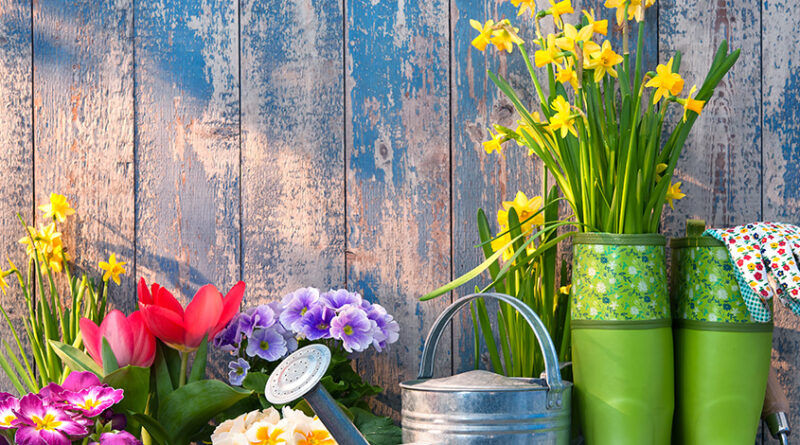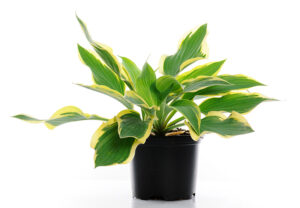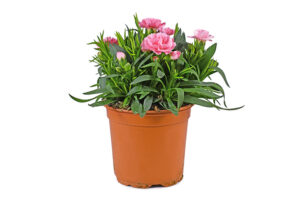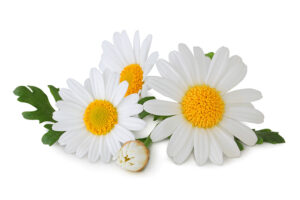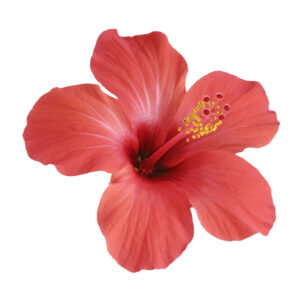Plan Flowerbeds for a Summer of Color
By Deborah Jeanne Sergeant
Make this the year you make your flowerbeds the star of the neighborhood by planning for color all season long.
Nan Stetler, owner of Marcellus Nursery in Syracuse, said that home gardeners can go with all annuals (which flower all season), stage perennials (which tend to have shorter blooming periods) or combine the two. But it is important to plan.
“Read the tags at a garden center and see what flowers when,” Stetler said. “With some, you can force a second bloom if you deadhead them.”
This means removing dead, dry blossoms.
Flower gardening for season-long color also depends upon the right plant in the right place. Danielle Magee, nursery manager at Morgan Meile Garden Center in Syracuse, advises checking the care tags on plants at a garden center and then selecting the right place to plant, according to sun exposure and soil type.
“Cornell is a good source for help, like soil sampling, especially if someone planted the same thing two or three times in the same spot,” Magee said. “If it’s constantly failing, that’s when I recommend that they get a soil sample so we can see what’s going on in that area.”
Extension offices will test the soil pH and nutrients for a nominal fee per sample. This can help save money by using the correct amendments only as needed and prevent the mistake of planting the wrong plant in the wrong place.
“Note the direction of the sun,” Magee said. “That will determine what plants you can use. The north side is the shady side, so pick ferns and hostas. In the south or west, you can put pretty much anything.”
The height and spacing of plants are important, because to avoid planting something that will become tall or bushy next to smaller, shorter plant. Competition for light and water is one way to complicate flower gardening. Plant shorter plants in the front, middle height plants in the middle and taller plants in the back.
Magee also plans her plantings based on naturally occurring moisture.
“I have a wet area in my backyard, so I will choose plants that can handle the water like dappled willow or summer sweet to soak up the water,” she said. “I have a high water table so I can’t plant certain trees because of that.
“It’s about whatever works. Some things may work in your yard that doesn’t work in my yard. You can’t get discouraged. You have to work with nature and experiment. That’s what it’s about.”
When planning a client’s garden, Jim Sollecito typically relies on perennials for a low-maintenance display. A lifetime senior New York state certified landscape professional, Sollecito owns Sollecito Landscaping Nursery, LLC in Syracuse. In his own gardens, he likes to add annuals like marigolds, for their gold and yellow blooms.
“Yellow is the color best seen on overcast days, so it is important in CNY to make sure you have enough in your planting,” he said.
He avoids planting annuals in dry shade, as it’s one of the most challenging areas for annuals.
As most perennials bloom for two to three weeks, it takes planning their sequences to ensure a garden has continual color all season.
“Many perennials have nice fall color in their foliage, and many have much better leaf texture than annuals,” Sollecito said. “No annual has good foliage color.”
One of his favorite perennials is yellow archangel, also known as lamiastrum, which he calls “virtually deer proof.”
“It has wonderful yellow flowers in May into June, and wherever it touches the ground it tends to root in,” he added. “We sell hundreds every year, and the beds of variegated foliage seem to last forever.”
Another problem area is near the roadside, as salt contaminates the soil. He likes Persian catmint or nepeta in those areas as a low perennial ground cover that flowers all season.
For wet areas, he plants Siberian iris, along with Caesar’s brother, which offer long-lasting flowers.
In the shade, Sollecito plants hot lips turtlehead, a colonizing perennial that offers color in late summer and early fall, when most annuals are nearly done.
“The hot pink blooms are so intense you’ll need sunglasses to look at them,” he added.
Annuals that require full sun to partial sun
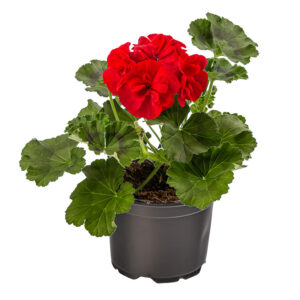 Petunia (Proven Winner variety)
Petunia (Proven Winner variety)
Petunia (Wave variety)
Schuetz said.
Geraniums
Ageratum
Lantana
Marigolds
SunPatiens
Angelonia
Truffula
Straw Flower
Cleome
Zinnia
Salvia
Shade loving plants include
Impatiens
Browallia
Coleus
Lobelia
Hostas
Wax begonia
Heliotrope
Nonstop begonia
Early perennial flowers include
Dianthus
Primrose
Candy tuft
Forget-me-nots
Phlox
Midseason flowers include
Daylilies,
Hosta
Bee balm
Russian sage
Lavender
Late season perennials include
Asters
Hibiscus
Anemone
Chrysanthemum

